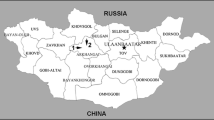Abstract
The Bukhara oasis, with its unique geographic location, played an important role during the medieval period when it led the region’s political development as part of the Islamic world adjacent to the pastoralists in the northern steppe. Such a distinctive geopolitical environment likely left a visible trace in the shaping of material culture, which we tested by focusing on numerous copper-based metal objects recovered from a medieval site near Bukhara, Uzbekistan. Different types of objects including lighting devices, household objects, small buckles, and rings were metallographically examined for their microstructure and alloy composition. A clear sign of technological transition from bronze to brass was consistently observed in all the object types under consideration where scrap bronze served as one of the key raw materials. Large objects were mostly made of alloys containing a substantial amount of zinc. In contrast, the small buckles and rings were strictly divided between those with and without the addition of zinc, suggesting the simultaneous existence of two different alloy traditions regarding the use of zinc. We discuss these analytical results to relate the emergence of such a unique technological tradition to the region’s sociopolitical settings.



Similar content being viewed by others
References
Allan JW (1979) Persian Metal Technology 700-1300. Ithaca Press, London
Bourgarit D, Bauchau F (2010) The ancient brass cementation processes revisited by extensive experimental simulation. The Journal of the Minerals, Metals & Materials Society 62(3):51–57
Christian D (1998) A history of Russia, Central Asia and Mongolia, volume I, Inner Eurasia from prehistory to the Mongol Empire. Blackwell Publishing, Oxford
Craddock PT (1978) The composition of the copper alloys used by the Greek, Etruscan and Roman civilizations 3. The origins and early use of brass. Journal of Archaeological Science 5:1–16
Craddock PT (1979) The copper alloys of the medieval Islamic World – inheritors of the classical tradition. World Archaeology 11:68–79
Dutrizac JE, O’Reilly JB (1984) The origins of zinc and brass. Historical Metallurgy Notes, CIM Bulletin 77(869):69–73
Frye RN (2011) al-Narshakhi’s The history of Bukhara. Markus Wiener Publishers
Kurbanov BG (2016) Nakhodki metallicheskikh izdeliy iz Varakhshi. In: Berdimuradov AE (ed) Arkheologiya Uzbekistana v gody nezavisimosti: dostizheniia i perspektivy. Materialy mezhdunarodnoy nauchnoy konferentsii, posviaschonnoy 25-letiiu Nezavisimosti Respubliki Uzbekistan. Samarkand, pp 128–130
Kurbanov BG (2018) Ob odnom tipe srednevekovykh metallicheskikh svetil’nikov Bukharskogo oazisa. In: Pardaev MH (ed) Birinchi Prezident I.A. Karimov davrida O’zbekistonda tarix fanining yuksalishi. O’zRFA Arxeologik tadqiqotlar institutida, 2018 yil 25-26 yanvarda o’tkazilgan Respublika konferentsiyasi materiallari. Samarkand, pp. 159-166
Park JS, Shinde S (2014) Characterization and comparison of the copper-base metallurgy of the Harappan sites at Farmana in Haryana and Kuntasi in Gujarat. India. Journal of Archaeological Science. 50:126–138
Park JS, Voyakin DA (2009) The key role of zinc, tin and lead in copper-base objects from medieval Talgar in Kazakhstan. Journal of Archaeological Science 36:622–628
Park JS, Voyakin DA (2011) A comment on the technological aspects of bronze and iron objects from the ancient burial complex at Karatuma in Southeast Kazakhstan. Industry 65(2):94–99
Park JS, Voyakin DA (2021) Technological transition and complexity reflected in bronze and brass objects from the medieval site in the Aral Sea region. Archaeol and Anthropol Sci 13:27
Park JS, Honeychurch W, Chunag A (2011) Ancient bronze technology and nomadic communities of the middle Gobi Desert, Mongolia. J Archaeol Sci 38:805–817
Park JS, Honeychurch W, Chunag A (2019) Iron technology and medieval communities of eastern Momgolia. Archaeol Anthropol Sci 11:555-565
Park JS, Beisenov A, Voyakin D (2020) The technological and social implication of the discriminated use of tin and arsenic noted in EIA copper-based objects of Central Kazakhstan. Archaeol and Anthropol Sci 12:81
Raspopova VI (1980) Metallicheskie izdeliia rannesrednevekovogo Sogda. Leningrad
Scott DA, Schwab R (2019) Metallography in archaeology and art (Cultural Heritage Science). Springer, Switzerland
Shishkin VA (1963) Varakhsha. Moscow
Thornton CP (2007) Of brass and bronze in prehistoric southwest Asia. In: Niece SL, Hook D, Craddock P (eds) Metals and mines-Studies in archaeometallurgy. Archetype Publications Ltd, London, pp 123–135
Thornton CP, Lamberg-Karlovsky CC (2004) A new look at the prehistoric metallurgy of southeastern Iran. Iran 42:47-59
Torgoev AI (2013) Remennye Ukrasheniia Karakhanidov (K postanovke problemy). In: Lurie PB, Torgoev AI (eds) Sogdiytsy, ikh predshestvenniki, sovremenniki i nasledniki. Trudy Gosudarstvennogo Ermitazha, LXII. St-Petersburg, pp 376–401
Zacharias SK (1984) Brass making in Medieval Western Europe, historical metallurgy notes. CIM Bulletin 77(863):110–114
Acknowledgements
This work would not have been possible without the generous support of Sukhrob Babaev and Abdulhakim Razzoqov. The latter kindly donated the objects under consideration to the Museum of the Bukhara State University.
Funding
The analysis and research presented was financially supported by the National Research Foundation of Korea (NRF- 2017R1A2B4002082).
Author information
Authors and Affiliations
Corresponding author
Additional information
Publisher’s note
Springer Nature remains neutral with regard to jurisdictional claims in published maps and institutional affiliations.
Rights and permissions
About this article
Cite this article
Park, JS., Voyakin, D. & Kurbanov, B. Bronze-to-brass transition in the medieval Bukhara oasis. Archaeol Anthropol Sci 13, 32 (2021). https://doi.org/10.1007/s12520-021-01287-3
Received:
Accepted:
Published:
DOI: https://doi.org/10.1007/s12520-021-01287-3




